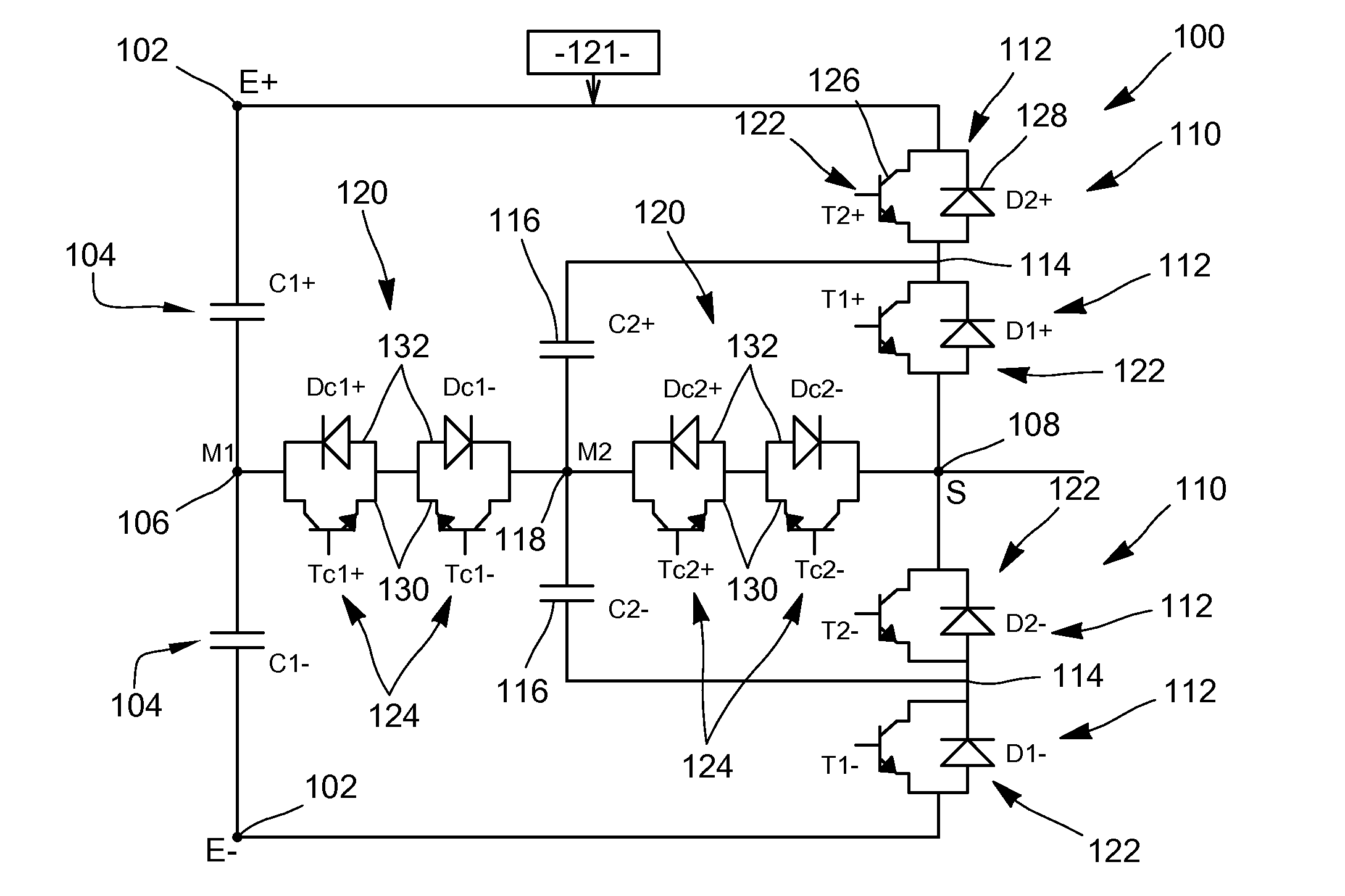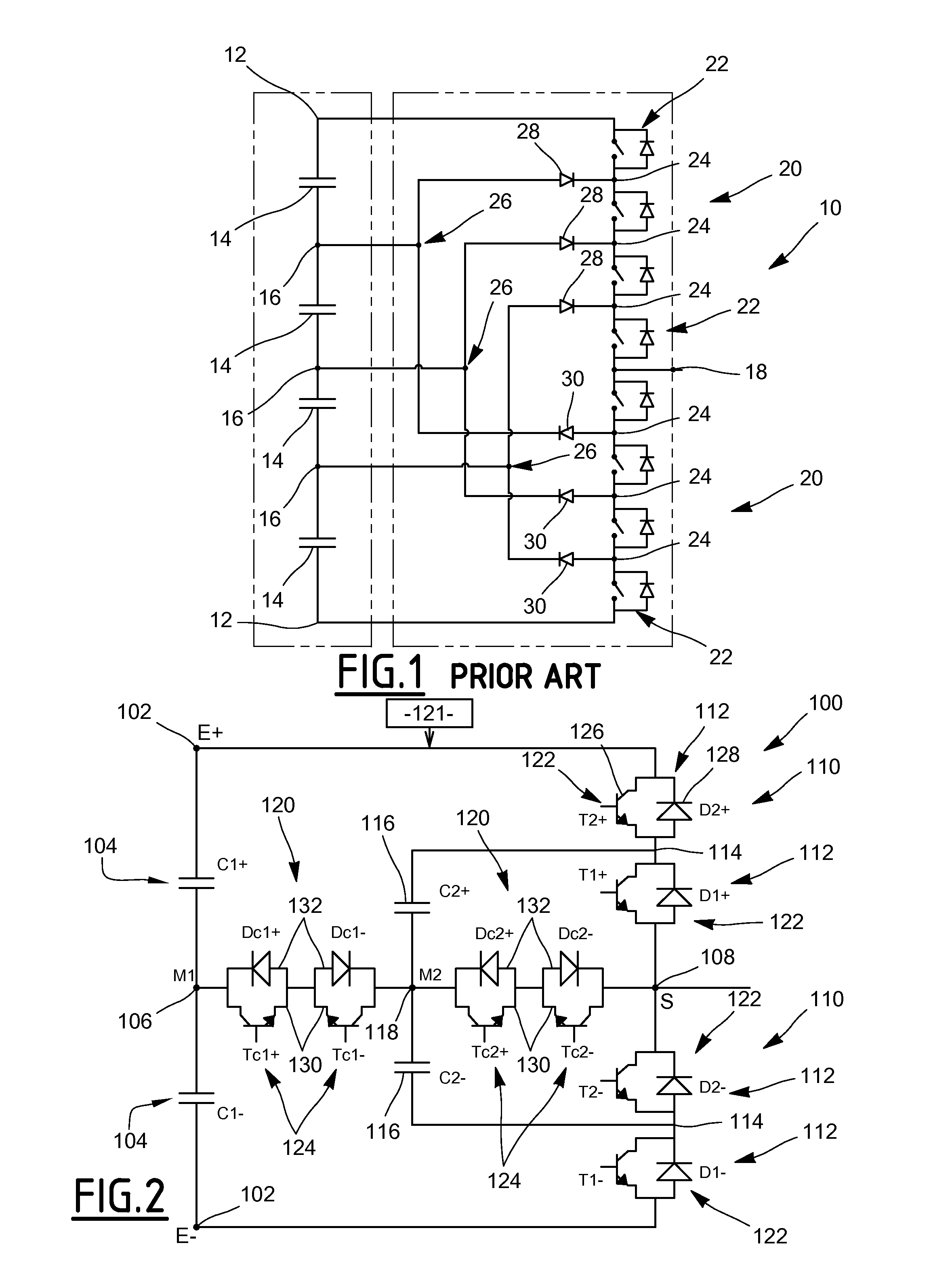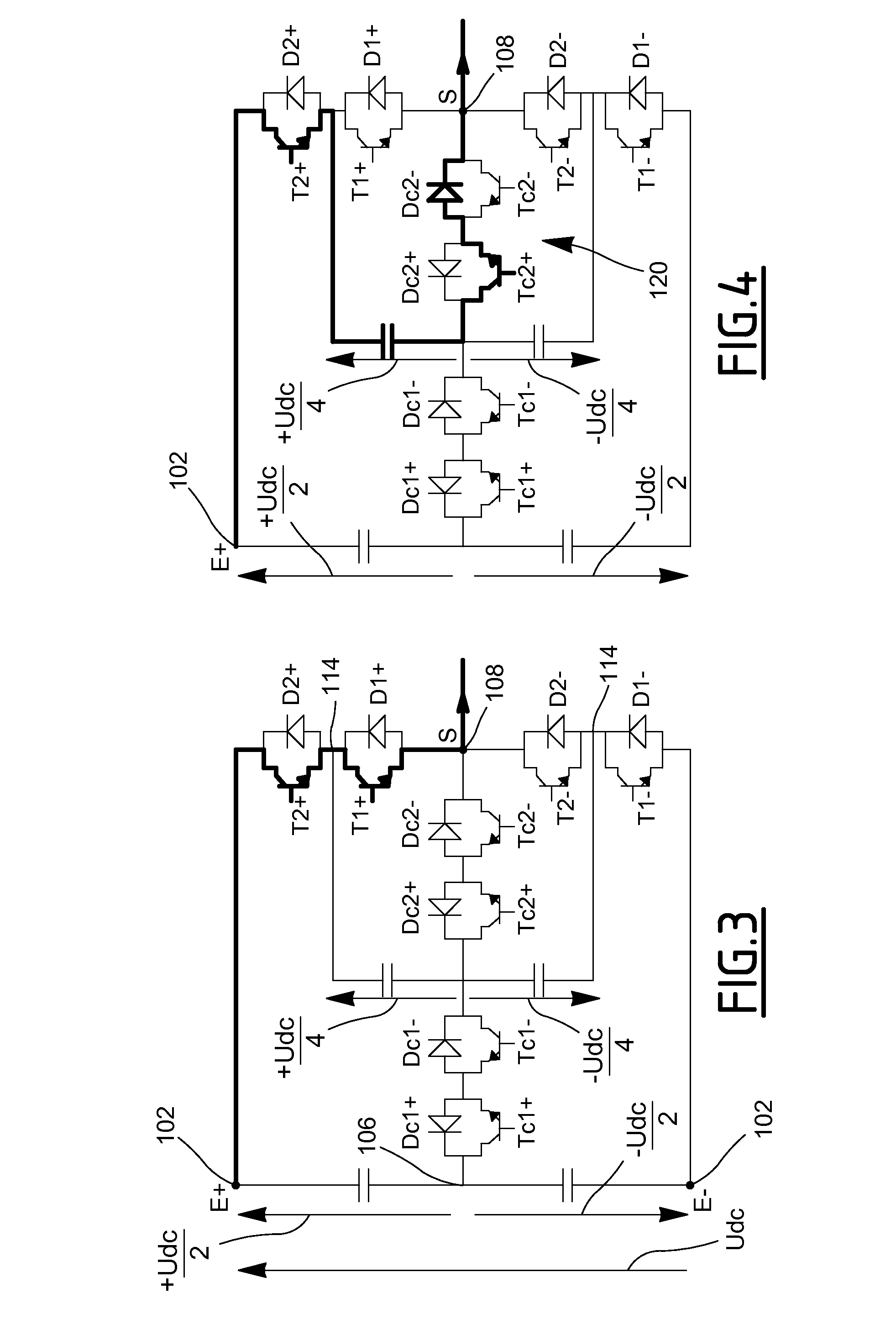2n+1 level voltage inverter
a level voltage inverter and level voltage technology, applied in the direction of ac-dc conversion, power conversion systems, electrical equipment, etc., can solve the problems of inability to correct equilibration, voltage and current at the output of the conversion system symmetrie, and excess costs
- Summary
- Abstract
- Description
- Claims
- Application Information
AI Technical Summary
Benefits of technology
Problems solved by technology
Method used
Image
Examples
first embodiment
[0038]FIG. 2 shows the voltage conversion system 100 with 2N+1 levels, with N equal to 2, or five levels.
[0039]The conversion system 100 includes two input terminals 102, i.e. a positive terminal denoted E+ and a negative terminal denoted E−, and two voltage generators 104 connected in series between the input terminals 102 and connected to one another by a middle point 106, also denoted M1.
[0040]The conversion system 100 includes, for the or each phase of the output voltage, only one phase being shown in FIG. 2, an output terminal 108, also denoted S, and two switching branches 110 each connected between the output terminal 108 and a respective input terminal 102. Each switching branch 110 comprises two first switching cells 112 connected in series and an intermediate point 114, the first two cells 112 being connected to one another by the intermediate point 114.
[0041]The conversion system 100 also includes, for the or each phase of the output voltage, a pair of capacitors 116, eac...
second embodiment
[0123]During the operation of the conversion system 100 the direct voltage between the input terminals 102 is equal to Udc, and the voltage at the terminals of the capacitor C1+ between the middle point 106 and the positive input terminal E+ is then equal to +Udc / 2, the voltage at the terminals of the capacitor C1− between the middle point 106 and the negative input terminal E− being equal to −Udc / 2.
[0124]The voltage at the terminals of the capacitors 116 denoted Ci+, Ci−, respectively, with i between 2 and N, is equal to +(N+1−i)×Udc / 2N, equal to −(N+1−i)×Udc / 2N, respectively. The voltage at the terminals of the capacitors 116 of the last pair of capacitors denoted CN+, CN−, respectively, is then equal to +Udc / 2N, −Udc / 2N, respectively, i being equal to N.
[0125]The operation of this second embodiment has state redundancies with the flowing current, for a same value of the alternating voltage, in one direction, then the other, through each of the capacitors 116 denoted Ci+, Ci−, re...
PUM
 Login to View More
Login to View More Abstract
Description
Claims
Application Information
 Login to View More
Login to View More - R&D
- Intellectual Property
- Life Sciences
- Materials
- Tech Scout
- Unparalleled Data Quality
- Higher Quality Content
- 60% Fewer Hallucinations
Browse by: Latest US Patents, China's latest patents, Technical Efficacy Thesaurus, Application Domain, Technology Topic, Popular Technical Reports.
© 2025 PatSnap. All rights reserved.Legal|Privacy policy|Modern Slavery Act Transparency Statement|Sitemap|About US| Contact US: help@patsnap.com



